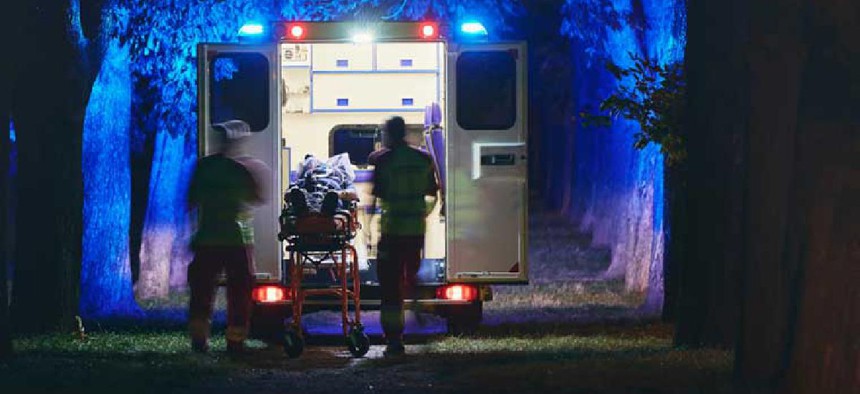Centralized address database eases NG911 adoption

Several Georgia counties and cities banded together to better share information and improve 911 capabilities using a cloud-hosted spatial database.
Several counties and cities banded together to better share information and improve 911 capabilities using a cloud-hosted spatial database.
Southeast Georgia Regional Alliance for Spatial Solutions (SEGRASS) Next Generation 911 Addressing Collaboration
Coastal Regional Commission
Click here for all the 2021 Public Sector Innovation winners
Georgia’s Coastal Regional Commission (CRC), which does orthoimagery and lidar economies-of-scale projects through mutual peer sharing, noticed that the user groups had common problems with complying with Next Generation 911 (NG911) requirements. For instance, emergency response times could take more than 30 minutes when a call came from a hunting camp deep in the woods where there were no road names or geographic information system (GIS) presence.
To address that, CRC joined with three counties and 11 cities to form the Southeast Georgia Regional Alliance for Spatial Solutions (SEGRASS), which created the Central Address Repository (CAR). A cloud-hosted spatial database for managing addresses that uses road centerline GIS data, CAR also centralized data warehousing to use shared infrastructure while implementing anomaly-warning quality control, and it included geofencing along jurisdictional boundaries for editing. The result is a format compatible with NG911.
“Previously, many of our communities had a pretty simple address schema. Now the addresses and the centerlines all meet the field schema designs for NextGen 911,” said Hunter Key, director of information services at CRC. “It is a pretty robust SQL database but then delves into some [Esri ArcGIS] tools and uses the ArcGIS Desktop platform.”
For instance, SEGRASS helped hunting camps name their roads and turn them into a GIS layer so that the driver of an emergency response vehicle could pinpoint where a call is coming from, “which just didn’t exist before,” Key said.
CRC, which covers 10 counties, decided about 18 months ago to formalize their economies-of-scale information-sharing projects through a memorandum of understanding and created SEGRASS. They decided on a five-step plan, Key said: develop a manual, develop a schema-matching database that meets NG911 standards, build checks and balances so the database is quality-controlled and -assured as it’s edited, include extraction so that neighboring communities could get data they didn’t own and train people on the new process.
Through the pilot, staff in six jurisdictions edit location-based data to a central location, eliminating redundancies in duplicate addressing lists. What’s more, this lets cities grab county data and counties access data from neighboring public safety answering point boundaries. Plus, CAR has established shared costs, process documentation, editing and maintenance tasks while eliminating anomalies and tracking inherited ones.
Key walked through how it works: When a subdivision is developed, the roads need names. After verifying that names aren’t similar to existing ones, they get approved and a plat reviewer draws them in. Next, a GIS analyst makes sure they are accurate and applies the address numbering convention. Lastly, a permit officer or someone who has permission to add the address can click on the road, click on the location where it needs to go and the system will populate that road name, the appropriate number and whether it is on the odd or even side of the road.
“The NextGen [911] rules also apply boundary files, making sure that there are no gaps – those are the next stages,” Key said. “The schema design for addressing and centerline is what was met…. They meet the design standards” for NG911 and will easily roll up to a state or broader level of the system.
“We’ll be in a regional rollup where we’ll have five or six counties or more that naturally can almost set the standard or roll up easily to the state NextGen database that they’re creating,” he added.
Key said he expects to add more counties and cities to CAR next year, adding that SEGRASS would likely then move it from a CRC-hosted cloud to Amazon Web Services or Microsoft Azure.
One benefit of CAR is increasing collaboration and minimizing staff hours in the rural communities where one or two people handle multiple GIS efforts. “This allows us to spread [the work] across jurisdictions and not have to spend a lot of time sharing data files back and forth,” Key said.
Another advantage is that referencing one CAR can eliminate redundancies in other permit systems such as trash pickup and water billing.
The biggest benefit, however, is improving the data for 911 dispatchers. In trying to meet NG911 requirements, many communities bought software without realizing they first needed the data to fuel it, Key said.
“They started using these systems with bad data and were really frustrated,” he said. “The biggest litmus test for us is how much the 911 directors were complaining before and how much they complain now.”





